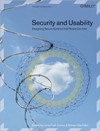作者:Ulrich Breymann
出版日期:September 22, 2002
出版社:Addison Wesley
ISBN:0 201 67488 2
文件格式:PDF
Ironically, it was inWaterloo that the STL was adopted as part of the ISO/ANSI Standard
C++ Library, and from that day on it went onto a triumphal march. Alexander
Stepanov and Meng Lee had proposed the result of years of research at Hewlett-
Packard, a standard template library, to the standards committee. The committee
gracefully adopted the STL as part of the C++ Standard at a committee meeting in
Waterloo in the summer of 1994, after countless controversial discussions and much
work spent by committee members on making the STL fit for a standard. Most
importantly, the adoption was tied to the condition that the source code had to be
made publicly available. Since then the STL has become more and more popular in
the C++ community and conquered the hearts of quite a number of programmers.
Personally, I know of software developers who cannot imagine getting their work
done anymore without a general-purpose library like the STL. Obviously, not all
Waterloos are the same. This Waterloo was in Ontario – seemingly a good omen.
Much of the merit, however, is not seriously due to picking the right location
for presenting a library. The STL is an invaluable foundation library that makes
programmers more productive in two ways. It contains a lot of different components
that can be plugged together, so it provides a flexible and extensible framework.
Plus, it has an elegant, consistent, and easy to comprehend architecture.
When Ulrich asked me in fall 1995 whether I would feel like writing this book
with him, my first thought was: Does the world really need another STL book?
Three books had already been out at that point in time; I had volunteered for writing
a regular column about the STL for a magazine of high renown like C++ Report; numerous
conference organizers invited me to speak about the STL; even my employer
had me prepare and conduct courses on the STL. In sum, there were countless resources
available to meet the growing interest in the C++ community. I simply questioned
the need for yet another STL tutorial. About a year later, I held the German
edition of his book in my hands, skimmed through the pages, and started reading –
with increasing enjoyment. And I must admit, he convinced me. This book goes
beyond the tutorials I had seen up to then and has an approach and appeal of its own:
it explains techniques for building your own data structures and algorithms on top of
the STL and this way appreciates the STL for what it is – a framework. I had been
looking for this aspect in tutorials, often in vain.
As can be expected, the book starts off with an introduction to the STL. Already
the initial explanations provide you with insights into the internals of the STL that
you miss in other introductory material. For instance, Ulrich explains what the implementation
of an iterator typically looks like. This kind of information is profound
enough to lay the foundations for leaving the realm of simple STL usage, and enables
you to understand and eventually extend the STL framework by adding your
own containers and algorithms. The most distinguishing part of this book is Part III:
Beyond the STL. You will see demonstrations of elegant and sophisticated usage of
the STL – well-known data structures like matrices and graphs built on top of the
STL, as well as examples of additions to the STL, like hash-based containers.
I would also want to acknowledge that this revised English edition of the book is
one of the most accurate and up-to-date sources of information on the STL currently
available. It reflects the ISO/IEC C++ Standard which was published in September
1998. Keep up with the language standard and learn how the STL will improve
your programs. In sum, I enjoyed the book and appreciate it as a sound and serious
reference to the STL. I hope you will also.




 评论 (0)
评论 (0) 